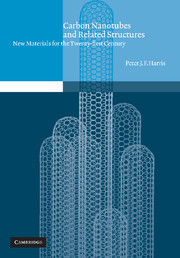Refine search
Actions for selected content:
106095 results in Materials Science
Transformation-induced plasticity in Fe–Cr–V–C
-
- Journal:
- Journal of Materials Research / Volume 25 / Issue 2 / February 2010
- Published online by Cambridge University Press:
- 31 January 2011, pp. 368-374
- Print publication:
- February 2010
-
- Article
- Export citation
Characteristics of copper indium diselenide nanowires embedded in porous alumina templates
-
- Journal:
- Journal of Materials Research / Volume 25 / Issue 2 / February 2010
- Published online by Cambridge University Press:
- 31 January 2011, pp. 207-212
- Print publication:
- February 2010
-
- Article
- Export citation
Low temperature consolidated lead-free ferroelectric niobate ceramics with improved electrical properties
-
- Journal:
- Journal of Materials Research / Volume 25 / Issue 2 / February 2010
- Published online by Cambridge University Press:
- 31 January 2011, pp. 240-247
- Print publication:
- February 2010
-
- Article
- Export citation
Ring-Resonator Design Allows Wide Wavelength Selectivity in Integrated Al2O3:Er3+ Ring Lasers on Silicon
-
- Journal:
- MRS Bulletin / Volume 35 / Issue 2 / February 2010
- Published online by Cambridge University Press:
- 31 January 2011, pp. 109-110
- Print publication:
- February 2010
-
- Article
-
- You have access
- Export citation
Quantifying the Kinetics of Crystal Growth by Oriented Aggregation
-
- Journal:
- MRS Bulletin / Volume 35 / Issue 2 / February 2010
- Published online by Cambridge University Press:
- 31 January 2011, pp. 133-137
- Print publication:
- February 2010
-
- Article
- Export citation

Crystallization of Polymers
-
- Published online:
- 29 January 2010
- Print publication:
- 19 September 2002
Appendix 5 - X-ray tables
-
- Book:
- Introduction to XAFS
- Published online:
- 25 January 2011
- Print publication:
- 28 January 2010, pp 241-250
-
- Chapter
- Export citation
2 - Basic physics of X-ray absorption and scattering
-
- Book:
- Introduction to XAFS
- Published online:
- 25 January 2011
- Print publication:
- 28 January 2010, pp 8-35
-
- Chapter
- Export citation
Contents
-
- Book:
- Introduction to XAFS
- Published online:
- 25 January 2011
- Print publication:
- 28 January 2010, pp v-vi
-
- Chapter
- Export citation
6 - Related techniques and conclusion
-
- Book:
- Introduction to XAFS
- Published online:
- 25 January 2011
- Print publication:
- 28 January 2010, pp 189-192
-
- Chapter
- Export citation
Frontmatter
-
- Book:
- Introduction to XAFS
- Published online:
- 25 January 2011
- Print publication:
- 28 January 2010, pp i-iv
-
- Chapter
- Export citation
Index
-
- Book:
- Introduction to XAFS
- Published online:
- 25 January 2011
- Print publication:
- 28 January 2010, pp 258-260
-
- Chapter
- Export citation
3 - Experimental
-
- Book:
- Introduction to XAFS
- Published online:
- 25 January 2011
- Print publication:
- 28 January 2010, pp 36-105
-
- Chapter
- Export citation
4 - Theory
-
- Book:
- Introduction to XAFS
- Published online:
- 25 January 2011
- Print publication:
- 28 January 2010, pp 106-133
-
- Chapter
- Export citation

Carbon Nanotubes and Related Structures
- New Materials for the Twenty-first Century
-
- Published online:
- 28 January 2010
- Print publication:
- 25 November 1999
5 - Data analysis
-
- Book:
- Introduction to XAFS
- Published online:
- 25 January 2011
- Print publication:
- 28 January 2010, pp 134-188
-
- Chapter
- Export citation
Appendix 4 - Reference spectra
-
- Book:
- Introduction to XAFS
- Published online:
- 25 January 2011
- Print publication:
- 28 January 2010, pp 232-240
-
- Chapter
- Export citation
1 - Introduction
-
- Book:
- Introduction to XAFS
- Published online:
- 25 January 2011
- Print publication:
- 28 January 2010, pp 1-7
-
- Chapter
- Export citation
Appendix 3 - Optimizing X-ray filters
-
- Book:
- Introduction to XAFS
- Published online:
- 25 January 2011
- Print publication:
- 28 January 2010, pp 219-231
-
- Chapter
- Export citation
Appendix 2 - Cumulants in EXAFS
-
- Book:
- Introduction to XAFS
- Published online:
- 25 January 2011
- Print publication:
- 28 January 2010, pp 212-218
-
- Chapter
- Export citation
